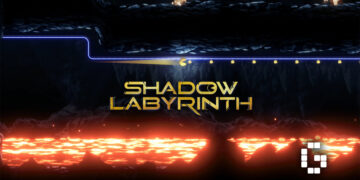Azur Lane made quite a splash when it was released in 2017, quickly becoming a big hit in Japan, which is quite an impressive feat, given that it is developed by two China-based game developers, namely Manjuu and Yongshi.
Let us address the elephant in the room first. Yes, at first glance this is some sort of Chinese bootleg of Kantai Collection, and while there are a lot of similarities, Azur Lane takes the best aspects of the game and improves above and beyond, while introducing new elements on its own.

Unlike Kantai Collection where battles are entirely turn-based and RNG-centric, how well you perform in Azur Lane‘s combat phase is pretty much solely based on your skill and reflexes. If you have played any shoot ’em ups such as Raiden and Ikaruga to the more extreme bullet hells such as the Touhou game series, you will be right at home here. You use the virtual joystick to move around and tap the on screen buttons for torpedo fire, airstrikes and battleship bombardments. And perhaps the best aspect about the combat is that none of your characters can permanently die should their health be depleted, a far cry from Kantai Collection where your ships will be gone forever.

Kantai Collection’s lineup of ships are mostly Axis-aligned, a trend which it carries on to today, with some exceptions, where UK and USA shipgirls were introduced later on. Azur Lane is somewhat more varied in this department, so unless you are a fan of a specific shipgirl, you will be pleased with the assortment available here. The variety of ships and classes play a far more important role here than in Kantai Collection too, since they all have their own specifications and abilities. A mix of the right ship types will be imperative in clearing some of the harder missions.

Micro-management here is far simpler, as you do not need to manually mark the quests, so whatever task you complete for the day or week is automatically checked. In addition, your girls are fully repaired after the end of each sortie, so you can go at it again immediately.

On the topic of subject of mobile game sensibilities, Azur Lane not only retains the secretary (and eventually marriage) system from Kantai Collection, you now have access to a dormitory where you can admire your girls as they go about their business, something it borrowed from THE iDOLM@STER Cinderella Girls: Starlight Stage. Furthermore, much like other mobage, Azur Lane rewards players who play consistently by rewarding them for logging in daily. And while it is very possible to deplete your fuel, a resource required to go on sorties, the game is generous in handing them out to you.
At the end of the day, Azur Lane is at its heart a free-to-play game, and that means there is premium currency to deal with. That said, it is very possible to enjoy this game to its fullest extent without ever having to make any purchases. The game does however shower you with premium currency, so you will be able to access the many quality of life improvements and in-game resource bundles.
Overall, Azur Lane not only succeeds at being an enjoyable game in its own right, it is far superior to Kantai Collection with regards to its game mechanics. One would argue that Kantai Collection offers better character designs and derivative works, but at the end of the day, its dated gameplay engine makes the experience of playing more of a chore than a joy.













![[EXCLUSIVE] Creative Masterminds from Gearbox Software Reveal What Makes Borderlands 4 Worth the Wait](https://cdn.gamerbraves.com/2025/07/Borderlands-4-at-Bilibili-World-2025_Interview_FI-360x180.jpg)




![[ASIA EXCLUSIVE] Bringing Back a Classic: Inside the Making of FINAL FANTASY TACTICS – The Ivalice Chronicles](https://cdn.gamerbraves.com/2025/06/FFT-Ivalice-Chronicles_Interview_FI2-360x180.jpg)



![[EXCLUSIVE] Honor of Kings Goes Global: Interview with James Yang on International Esports Expansion](https://cdn.gamerbraves.com/2025/08/James-Yang-Exclusive_Interview_FI-350x250.jpg)





